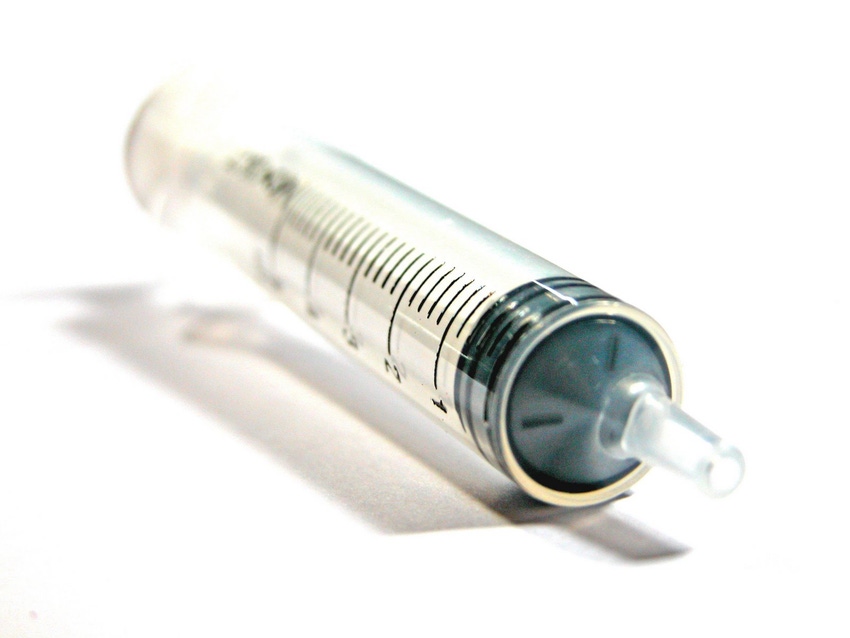Inmold-labeled syringes present a production paradigm shift
Fort Collins, CO–Tackling a 16-cavity inmold labeling (IML) job for any application can justifiably be called a challenge, but taking on such an IML system for a syringe? The word custom automation supplier CBW Automation heard was "impossible". In spite of the difficulty of the task at hand, and any doubts, CBW (Fort Collins, CO) pulled it off, with the finished concept generating a great deal of buzz.
August 10, 2011

heard was "impossible". In spite of the difficulty of the task at hand, and any doubts, CBW (Fort Collins, CO) pulled it off, with the finished concept generating a great deal of buzz. In the past, syringe makers would be forced to utilize downstream pad printing of gradients and other information on syringes or apply labels post-mold. Both approaches add cost, time, and the opportunity for error, hence the excitement for finished syringe barrels exiting the mold.
"This [IML syringe system] is a very recent development and we are just beginning to spread the word about this capability," explained Robert Harvey, sales manager at CBW. "Where we have discussed this technology, we have definitely generated interest."
In the case of a prefilled syringe or vial, Harvey noted in addition to an integrated label that cannot be removed from the package, IML also provides protection from counterfeiting, an added bonus that has been very interesting to brandowners. "In addition, the flexibility and quality of the images really create packaging that is pleasing to the consumer and clear to read," Harvey said.
Harvey noted that taking on 16 cavities in any IML application is difficult enough, but the syringe project's challenges didn't stop at how many were being molded at one time. The syringe's geometry, which required deep label placement on a zero-draft part with diameters as small as 0.5 inch, further tested CBW and its customer.
Cut-in-place labels save money
In designing the system, Harvey said CBW considered the two primary approaches for presenting labels, cut-in-place/roll fed labels or pre-cut labels introduced via cartridges. The cut-in-place system that CBW opted for in this application offers 30-40% in cost savings. CBW's first cut-in-place system was created in 2003 and the technology has been gaining traction ever since. Some of the aforementioned cost savings are generated from:
Not paying for cutting labels
Ability to use thinner labels
Elimination of anti-stat since labels aren't stacked together
Less scrap thanks to higher reliability of label grabbing
In a typical system, once an individual label is presented, it's picked by a robot and placed on a mandrel, with the geometry of the label requiring some additional tooling to achieve "wrap". The mandrel itself sits on the end of the robot arm, which places the label into the cavity using the mandrel while also retrieving completed parts from the core. In some cases, the mandrel passes through a charging station to apply a static, which adheres it inside the cavity.
One-stop automation cell shopping
Apart from the labels, the mold, and the molding machine, CBW supplies everything needed for its customers, including label-cutting devices (guillotine, roller die, or laser, which CBW is still investigating); automation for picking and placing labels; robots for bringing the mandrels with labels into the mold cavity; static-charging systems for labels; a label-wrapping station with tooling; robots and tooling for bringing the finished part out of the mold; and conveyors for moving finished parts out of the cell. Depending on the requirements of the application, CBW can also provide stacking, boxing, and inspection systems, as well as other packaging automation.
That capacity and willingness to customize is a key differentiator for CBW, according to Harvey. "Instead of saying, 'These are our products, do you want to buy them,'" Harvey said, "we ask, 'You're our customer, what can we do for you?'"
About the Author(s)
You May Also Like


